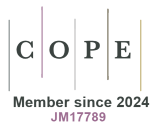Most read articles by the same author(s)
- Matteo Ruggeri, Francesca Romana Rolli, Cost per response/remission in biologics available in Italy for the treatment of TNF-α inhibitors-naïve patients with ulcerative colitis , Global and Regional Health Technology Assessment: Vol. 6 No. 1 (2019): January-December 2019
- Eugenio Di Brino, Matteo Ruggeri, Stefania Boccia, Nicoletta Cerana, Domenica Lorusso, Dario Sacchini, Antonella Savarese, Liliana Varesco, Americo Cicchetti, A cost-minimization analysis of a preventive testing strategy for relatives of patients with BRCA mutated ovarian cancer , Global and Regional Health Technology Assessment: Vol. 7 No. 1 (2020): January-December 2020
- Stefano Fagiuoli, Matteo Ruggeri, Filipa Aragao, Rob Blissett, The Clinical and Economic Benefits of a New Paradigm of HCV Diagnosis and Treatment , Global and Regional Health Technology Assessment: Vol. 8 No. 1 (2021): January-December 2021
- Francesco S Mennini, Andrea Marcellusi, Chiara Bini, Maria Assunta Rotundo, Alessandro Giunta, Antonio Gasbarrini, Guido Valesini, Pier Luigi Canonico, Ettore Novellino, Valentina Orlando, Alessandra Mecozzi, Teresa Gamucci, Livio Pagano, Eugenio Di Brino, Matteo Ruggeri, Americo Cicchetti, The economic impact of biosimilars in Italy: a scenario analysis , Global and Regional Health Technology Assessment: Vol. 6 No. 1 (2019): January-December 2019
- Rossella Di Bidino, Luz Irene Urbina, Marco Oradei, Amerigo Cicchetti, Evaluation of the use of Floseal®, a topical hemostatic agent, in cardiothoracic surgery , Global and Regional Health Technology Assessment: Vol. 7 No. 1 (2020): January-December 2020
- Raffaella Cocciolo, Paola Turella, Daniela Pilunni, Pierluigi Navarra, The length of price&reimbursement negotiation procedures in Italy in the period 2021-2023 was independent from the price of medicines , Global and Regional Health Technology Assessment: Vol. 12 No. 1 (2025): January-December 2025
- Matteo Ruggeri, Michele Basile, Alessandro Armuzzi, Americo Cicchetti, Activity-based costing and budget analysis of vedolizumab versus conventional treatments in ulcerative colitis and Crohn's disease , Global and Regional Health Technology Assessment: Vol. 4 No. 1 (2017): January-December 2017
- Francesco S. Mennini, Lara Gitto, Roberto Scrivo, Filippo Drago, Marco Iezzi, Lorenzo Terranova, Matteo Ruggeri, Andrea Marcellusi, Simone Russo, Raffaella Viti, Americo Cicchetti, The Promotion of Drug Innovation in Italy: Critical Aspects and Unsolved Problems , Global and Regional Health Technology Assessment: Vol. 3 No. 1 (2016): January-April 2016
- Matteo Ruggeri, Andrea Aiello, Anna D’Ausilio, Eugenio Di Brino, Salvatore Cottone, Angelo Ghezzi, Lorella Lombardozzi, Alessandra Mecozzi, Dario Sacchini, Alessandro Roccia, Monica Mangone, Mondher Toumi, Evolution of the Healthcare Expenditure in Italy and Effects of Fingolimod Increased Prescribing in Second Line Treatment of Relapsing-Remitting Multiple Sclerosis , Global and Regional Health Technology Assessment: Vol. 3 No. 3 (2016): September-December 2016
- Matteo Ruggeri, Alessandro Signorini, Silvia Caravaggio, Gabriele Righi, A cost-effectiveness analysis of Navina Smart on adult patients affected by neurogenic bowel dysfunction , Global and Regional Health Technology Assessment: Vol. 11 No. 1: January-December 2024









